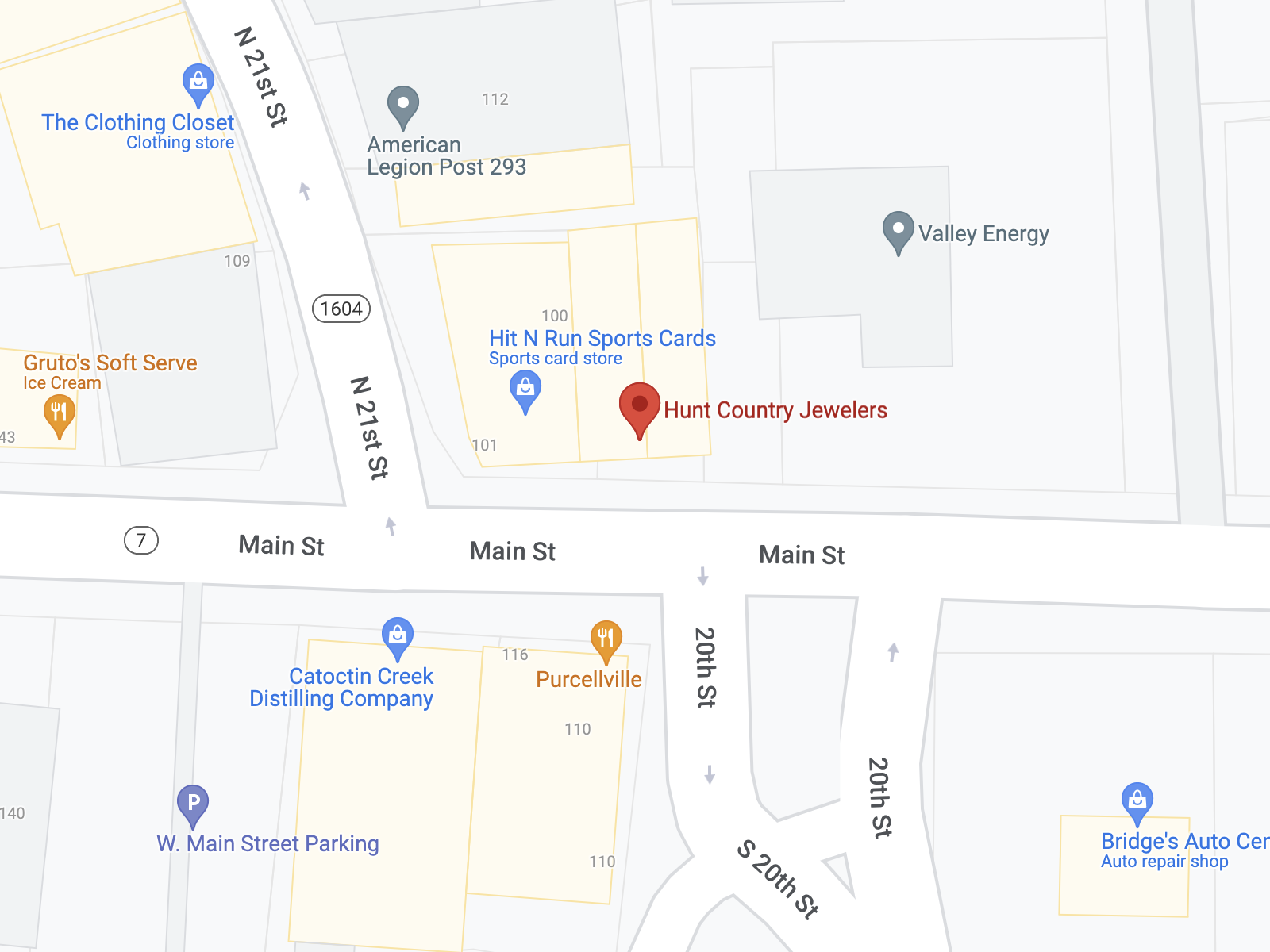Let’s Talk About: Sourcing Your Stuff
It’s tempting, I know- that parcel of diamond melee for sale on Ebay. It’s just exactly the right price for your budget and the size is pretty close, the quality listed is acceptable to you. Perfect, right?
Well, maybe. Consider the benefits of letting your jeweler source diamond and gemstone melee, side stones, and matched pairs for you that you may not get when sourcing them on your own, even from your own jewelry:
- Our parcels and pairs are matched and sorted correctly. Color and clarity are important to match because that’s what you are going to notice first, but even more importantly, from a manufacturing perspective, is matching in size and shape.
1.3mm and 1.4mm are not the same size. It seems like a very small difference, but it is much more difficult to set stones that are not the same exact size. It requires a different size burr to cut each seat, which means that a craftsman has to keep changing out his equipment during seat cutting. In addition, the setter must now keep track of the order in which the stones must be set in order to match all the seats that have been cut with different sized burrs.
Depth further complicates size discrepancies. Stones should be set to appear level and even. I say ‘appear’ rather than ‘be’ because two side-stones that look the same from the top but are different in the depth or the shape of their pavilions require different things of the mounting and of the setter, often resulting in a necessary optical illusion of evenness and levelness. Making non-matched stones appear to be matched demands a skilled wax carver and a master setter.
True sorting and matching for size requires an accurate micrometer, a lot of patience, and the knowledge to know what you are looking for.
Different shapes matter, too. They may all look round to the naked eye, but under magnification some will be rovals (round ovals!), some more square, some tables will be off center. These differences do make setting more difficult, but the bigger problem is that you will see the discrepancies in the final product. It will look slightly less refined, not quite as graceful, and just a little off. The craftsmanship can be excellent, but the finished look is heavily dependent on the quality of the materials used.
Much, if not all, of the money you save in buying that parcel yourself will be eaten in the extra labor required to work with incorrectly sorted and matched stones. Which is a budget bummer, but you lose doubly when it also negatively affects the final look of your commissioned piece. We also find this sort of poor matching in already set jewelry. The diamonds from the following pictures all came from the same piece; stones that are machine set or being forced into premade settings aren’t immune from the sorting sickness!
- When we source stones- centers, matched pairs, or melee, we are paying a great deal of attention to condition. The overall condition of the stones may appear okay at first glance- we are looking deeper and under magnification for nicks, dings, and other damage that may be hiding where your naked eye can’t see it. So what, you say! If I can’t see it with my naked eye what difference does it make? There are three ways it does, indeed, make a difference:
a. Price/Value: You should not pay full retail for damaged goods, nor should an appraiser place full retail value on them. Heaven forbid something happen to your ring, the insurance company will only pay out enough to replace with other damaged or subpar replacements.
b. Performance: You may not see the chipped edge on that diamond, but it’s interfering with the facet pattern and the light return. Colored gemstone parcels that have been stored in stone papers often have paper wear- an abrasion of all the crown facets from the contact and friction with the other stones in the parcel. The abrasion present in paper worn stones often creates lines of matte, rounded facets- like a spider web of dullness across the top of your stone. It’s not pretty.
c. Set-ability and Longevity. Diamonds fare the best here- it takes a rather large nick to make them unsettable, but it does happen. Cracks, damage on the girdle, divots in the crown, all make diamonds unsuitable for setting. Colored gemstones are even more sensitive- a misplaced inclusion or a small chip can make a stone unsuitable for setting due to the amount of pressure needed to properly press and fold the metal. Even if you can successfully set these stones initially, their longevity in the mounting in compromised. Small nicks become large cracks when they meet the edge of a shopping cart and abraded facets have fewer years of beauty until they are matte cabochons.
- And lastly, don’t be penny wise and pound foolish. When we are able to supply stones and melee for your project I have a lot more wiggle room to play with in your estimate- have two identical bands being made and I am providing your diamond melee? Weeeeel, maybe I can look at your wax fees and trim them. It’s all dependent on the project and the material, of course, but it gives me options to make sure you are getting the most bang for your buck. If you have provided all the stones I have to be very strict about every setting , every change to the wax, every gram of gold used. So you saved $100 on your diamond melee, but now I can’t overlook the extra four hours we spent making changes to your wax, so the overall labor charge goes up $200.
So to sum up, it is possible to correctly source your own stuff, but the old adage applies: You get what you pay for. True deals on great parcels will cost you (or me) in time and effort what they lack in price. It is because of these issues that we have decided here at HCJ that we are going to be very conservative about what melee we accept to be reset in commission work; the savings cost is simply not worth the loss of labor and grace in the finished products that bear our name. There will be instances when the stones you have are perfect for reuse, of course. And if you think you have some we’d be happy to take a look. If we can work with your material, we will and we’ll be honest about why we can’t if we decline to work with it.
As always, the goal is heirloom quality jewelry at a fair price. We feel this policy helps us achieve that goal- and it helps you get a great product and have a great experience.
Have you ever attempted to source your own stuff? Successfully? Unsuccessfully?

